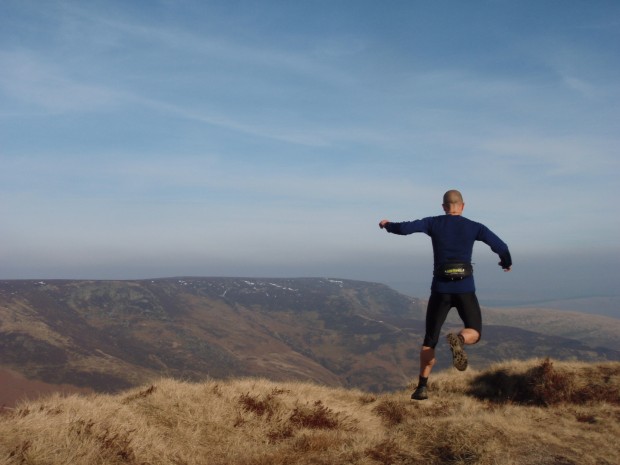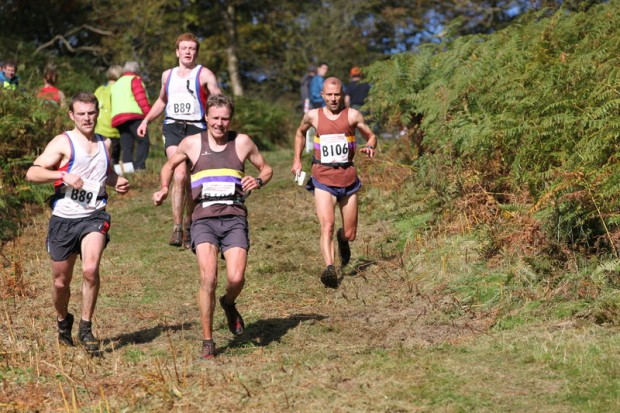Have you ever been walking up a hill, proud of your navigational and athletic achievements only to be deflated when a skinny runner bounds effortlessly past you wearing little more than vest and shorts and carrying a tiny bumbag?
Ever wondered how or why they do it, how they don’t get lost or injured? Ever thought that you’d like to give fell running a try?
 The term “fell” is simply a northern expression for a hill or mountain. Out of necessity shepherds needed to be able to cover such terrain quickly, in all weathers without becoming lost. In the 1800’s organised events such as the Grasmere Games began to take place where locals would pit their skills against each other racing up and down such hills and thus the sport of Fell Running was born.
The term “fell” is simply a northern expression for a hill or mountain. Out of necessity shepherds needed to be able to cover such terrain quickly, in all weathers without becoming lost. In the 1800’s organised events such as the Grasmere Games began to take place where locals would pit their skills against each other racing up and down such hills and thus the sport of Fell Running was born.
Today the sport is administered by the Fell Runners Association (FRA), affiliated with UK Athletics and with rules for competition mainly covering safety requirements and specifying race categories (determined by length, terrain and rate of ascent). Even so, fell running is still very much an amateur sport with race winners seldom walking away with more than a bottle of wine. Even the reward for being the best in Britain is largely intrinsic with the prize rarely more than a pair of running shoes from a local sponsor.
However it is this low key approach that attracts many to the sport. Very little specialist kit is required, a pair of fell shoes and a set of waterproofs will suffice, and rarely can the average athlete line up alongside the best in the country and share their experiences with them afterwards, often over a pint. Elitist it is not.
Fell running is predominantly a northern sport due to the location of the fells; the Peak District, Yorkshire Dales, Lake District, Wales and Scotland being the obvious areas. Running clubs have become established on a regional basis, each having a distinctive vest with Borrowdale, Bingley, Pudsey and Bramley, Calder Valley and Dark Peak being instantly recognisable to the knowledgeable.
It is not a requirement to belong to a fell running club in order to race and some runners take part representing their triathlon, road running, or university club or simply as “unattached” runners.
Races take place throughout the year, although mostly in summer, and many of these still hold true to tradition being part of the Summer Games or Village Fete where the race is just one attraction along with sheepdog trials and tractor displays. Other races are stand-alone events and some, such as Wasdale and Jura, have achieved status for being tough events and a true test of physical and navigational abilities.
A would be fell runner needn’t be put off though as many races are beginner friendly and don’t require navigation skills. The FRA website gives details of races stating distance, height gained and whether the races are marked (i.e. following flags rather than needing to navigate)
More recently a different form of the sport has emerged; that of trail running. This differs from fell running in that the routes tend to be on well-marked trails without the need for the runner to navigate. Trail races tend to visit mountain passes whereas a fell race would take in the summits. Trail running terrain is also less demanding, covering well defined rocky paths rather than rough, open moorland and path-less hillside often found on fell races. However there is a certain amount of overlap in the disciplines with some races in the FRA calendar being more akin to trail races.
Overseas, trail races are becoming very popular with athletes such as Kilian Journet excelling at Ultra distances, gaining sponsorship and achieving cult status. But when you see the image of the “Trail Runner” with the poles, the compression clothing, the technical rucksack, running on a sun kissed path – think of the shepherds rounding up their flocks on a bleak Lake District hillside. It’s how it all began.

Useful Links:
- Fell Runners Association: For info on races, running clubs, results.
- Fell Running Guide: A guide can really help you improve your fell running with guided running, training, introductory courses and navigation skills.
- Pete Bland Sport: One of the original specialist shop and a sponsor of many races.
- Trail Running magazine: The magazine for all things Trail Running in the UK
- Feet in the Clouds: Richard Askwith’s award winning book about Fell Running. A real inspiration to many.